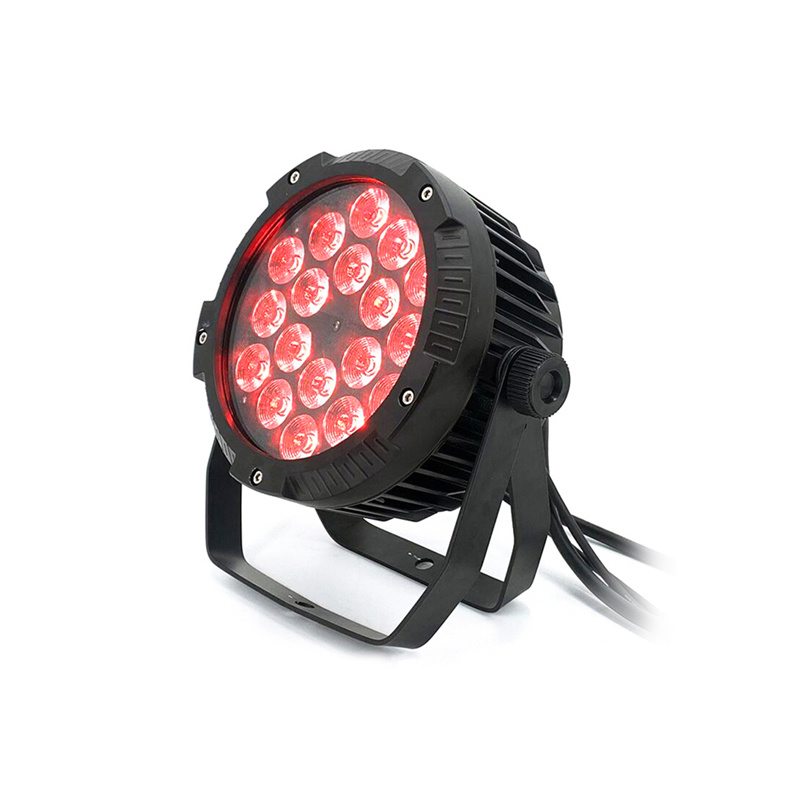How to Choose the Best Stage PAR Light for Your Event
Classification:
summary description]
If you're planning an event—whether it's a concert, a wedding, or a theater show—you’ve likely asked yourself this question: What kind of stage lighting do I really need? And among the many options out there, stage PAR lights are one of the most versatile and widely used.
But with so many models, colors, and features, it’s easy to get overwhelmed. This guide aims to help you make sense of it all—from a user’s perspective—so you can find the right lights for your setup, without wasting time or money.
What Are Stage PAR Lights, Really?
Stage PAR lights (short for Parabolic Aluminized Reflector) are compact yet powerful lighting tools that project a wide beam of colored or white light. They're used everywhere—from small club gigs to large concert halls. These days, most PAR lights use LED technology, which means lower heat output, less energy use, and longer lifespan compared to older halogen models.
They’re ideal for wash lighting—spreading even, colorful light across a stage, backdrop, or dance floor.
Struggling to Choose? You're Not Alone
Many people searching for stage PAR lights face similar dilemmas. Maybe you’ve asked:
- “Is this light powerful enough for my space?”
- “Do I need professional DMX controls, or can I keep it simple?”
- “What does RGBW even mean, and why should I care?”
Let’s break down what actually matters—so you don’t end up buying lights that don’t meet your needs.
What to Consider Before Buying
1. Venue Size and Purpose
Smaller rooms or mobile DJ setups typically do fine with low-wattage lights and narrow beam angles (15°–30°). But for larger venues or outdoor events, you’ll want high-output PARs with wide beams and more color control.
2. Control Options: DMX vs. Plug-and-Play
If you're doing synced light shows, DMX compatibility is essential. It allows you to program sequences, fade effects, and even coordinate with music or video.
On the other hand, if you just want something that works right out of the box, go for a unit with sound activation or a remote.
3. LED Type and Color Mixing
You might see terms like RGB, RGBW, or RGBA. Here’s what they mean in simple terms:
- RGB: Basic Red, Green, Blue
- RGBW: Adds White for cleaner tones and pastel shades
- RGBA: Adds Amber for warmer, theater-style lighting
The more color channels you have, the smoother and richer your effects will be.
How Many Do You Need?
This depends entirely on your setup. Lighting a 20x15 ft stage? Four to six mid-powered PAR lights might do the trick. Want to highlight just the background or ceiling? Two lights may be enough. Always consider spacing, height, and what you're trying to highlight.
Features That Actually Matter
- Brightness (Lumens or Wattage)
- Beam Angle – Narrow for focused light, wide for washes
- Cooling System – Fanless units are great for quiet settings
- Mounting Options – Can you floor-mount or truss-hang easily?
- Housing Material – Metal housings last longer under heat and travel
Don't get lost in specs. Focus on what serves your real-world needs.
Popular Applications
- Live Concerts: Use multiple DMX PARs for layered colors and mood shifts.
- Weddings: Wash walls or stages with warm or themed lighting.
- Nightclubs: Combine with strobes and moving heads for a full effect.
- Theater Shows: Use amber and white for realistic, soft scene lighting.
Final Tips Before You Buy
- Try before you buy, if possible. Or check out demo videos.
- Don’t just go for the cheapest. Quality matters long-term.
- If you’re starting, get 2–4 good units. You can expand later.
- Ask your supplier about included accessories—like power cords, clamps, or DMX cables.
Final Thoughts
Choosing the right stage PAR light doesn’t have to be a technical nightmare. Think in terms of space, control, and purpose. Whether you're lighting up a dance floor or setting the mood for a stage performance, the right lighting will make your event feel polished and professional.
Still unsure? Reach out to a lighting specialist or supplier you trust. The right advice now can save you time and money later—and give your audience a show they won’t forget.
Previous Page
Previous Page
More Cases



